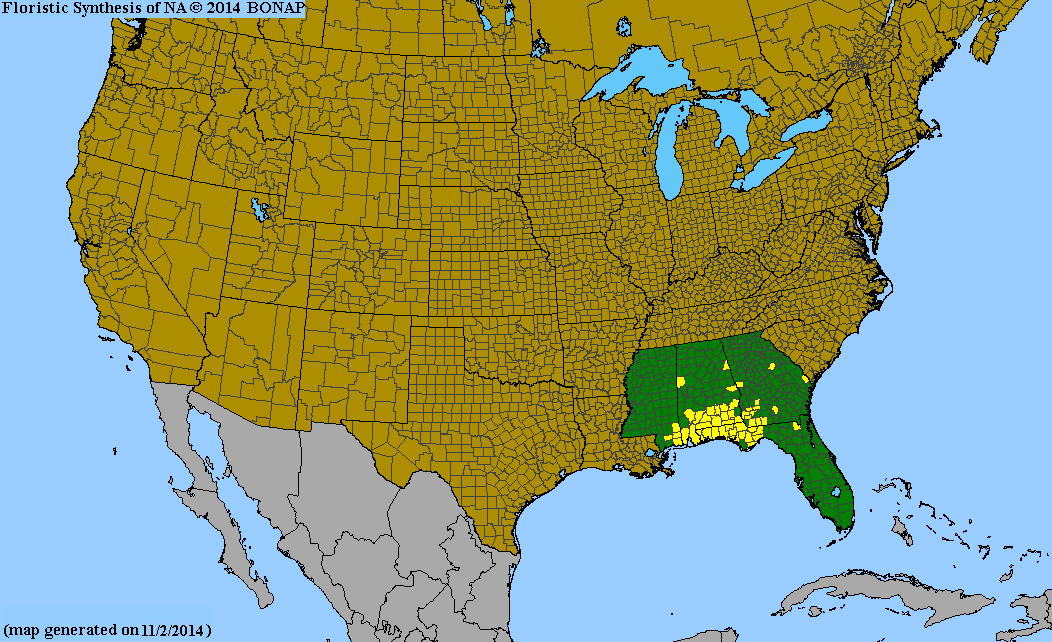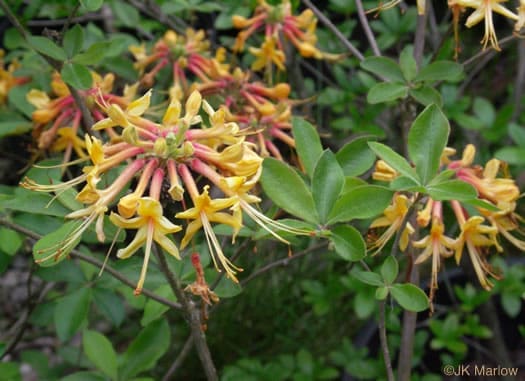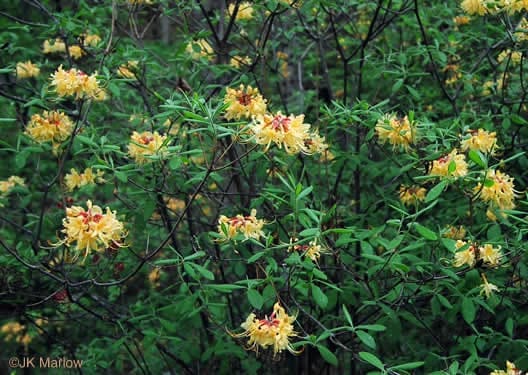Ericaceae
Florida azalea
Rhododendron austrinum
Synonyms
Azalea austrina
Other Common Names
orange azalea
Plant Type
Shrub (less than 10 ft)
Life Cycle
Perennial
Typical Size
8-10 ft. tall
8-10 ft. wide
Inolerant of
Dry Soil, Direct Afternoon Sun
Propagation
By seed, By cutting
Plant Propagation Notes
Seeds germinate in temperatures between 45-50 degrees F. Seedlings require acidic soil.
Plant Planting Notes
Provide up to 10′ spacing.
Plants/Diseases
It is important to provide flame azaleas with appropriate cultural requirements, otherwise numerous insect and disease problems may be experienced.
Wildlife Benefits
Nectar/pollen source for pollinating insects, Nectar source for hummingbirds
Leaves
Simple, alternate leaves with ovate to obovate blades and entire margins.
Flowers
Flowers open before or simultaneously leaf development. Bright orange-red funnel-shaped arranged in a raceme. Fragrant.
Fruit
Elongated capsule.
Toxicity
All parts of the plant is toxic.

USDA Hardiness Zones
7, 8, 9
Light Exposure
Part Sun/Shade
Soil Moisture
Medium, Moist
Soil Drainage
Well-drained
Soil pH
Acidic (less than 6.0)
Native in South Carolina?
No
Closest States Where Native
Georgia
Plant Native Habitat
Wooded slopes, bluffs, and lowlands near streams.
Global Conservation Status (NatureServe)
Vulnerable (G3)
Federal Conservation Status (USFWS)
Not Listed
Distribution Notes
Native to Georgia.


